Lens of LED lighting design
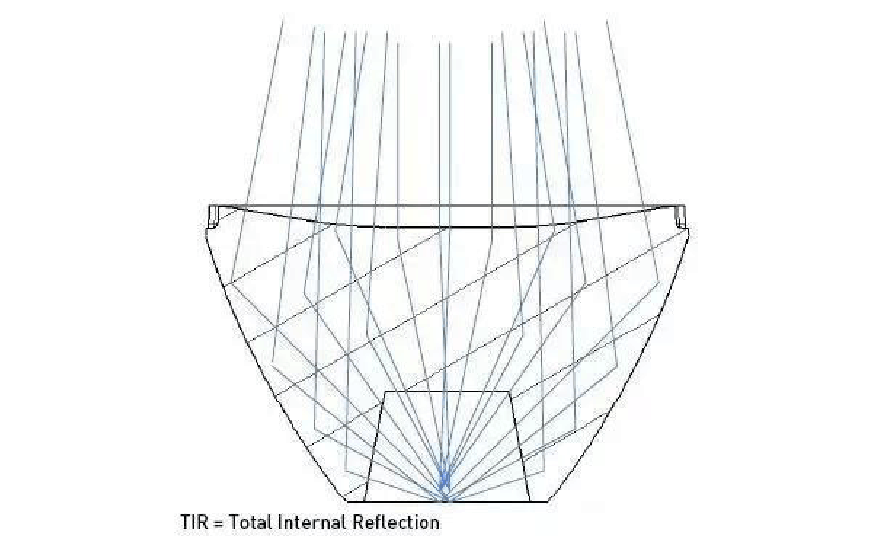
For the light distribution recognized by non-professionals, a question asked by the metropolis is: what is the difference between a reflector and a lens? A more vivid analogy is:The reflector is to reflect the light emitted by the light source. In this case, there will be some fish that slip through the net and run out directly without reflection; The lens is to swallow the light emitted by the light source, digest it and then spit it out.
the most classic standard lens is conical lens. A large part of these lenses rely on total internal reflection, so they are called TIR (Total Internal Reflection) lenses.
Usually, the TIR lens is axisymmetrically designed to provide a beautiful circular light spot, which can be combined into multiple LEDs to become an array lens or a single piece can be added with a bracket to facilitate installation and light control
In fact, the basic working principle of both is the same, but the TIR lens has more control, because each light of the TIR lens is controlled and utilized, and a large part of the light of the reflector is not reflected. The surface is not controlled, which is easy to see in small-angle optics. The light type of the reflector is not as sharp as the light type from the TIR lens (in short, the secondary light spot of the reflector is larger).

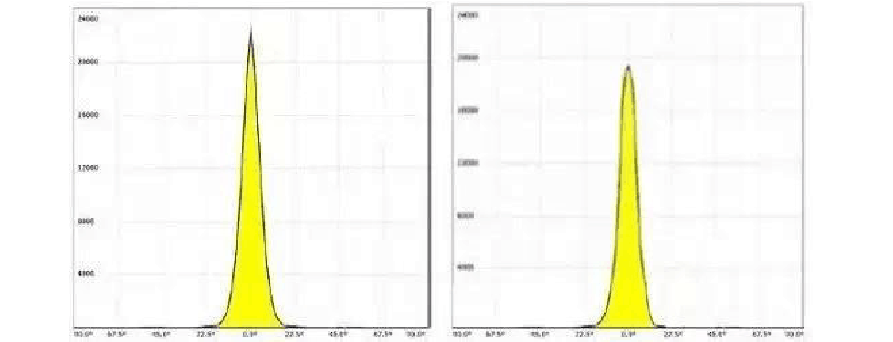
Type of lens

Image: From left to right :
1. True spotlight (-RS),
2. Soft spotlight (-SS),
3. Diffusion concentrating (-D),
4. Middle angle (-M/-M2),
5. Ellipse angle (-O),
6. Large angle (-W/-WW/-WWW).
Different TIR lenses are used for different optical properties, and the size of the lens and the LEDs directly affect the optical performance. Therefore, it is inaccurate to talk about the angle, light intensity and efficiency without clear preconditions. A good optical design must follow the Only when the light distribution of LEDs is perfectly matched can a good optical effect be obtained.
In professional optical design, there is no omnipotent product, and some are targeted with optics and targeted applications.
Let's take a good look at each of the different optics in the TIR lens family:
True Condenser Lens (-RS)
In the lens family, this type of lens is the most concentrated. The purpose is to achieve high cd/lm (peak light intensity), but it will also lead to the lack of some light mixing performance. This type of lens is easy to identify and generally has a crystal clear and transparent surface. transparent, and some may be hollow.
The main directions of applying this type of lens include spotlights, spotlights, long-distance wall washers, etc.
Cases such as bridge lighting, high-rise building lighting, indoor spotlights, etc.
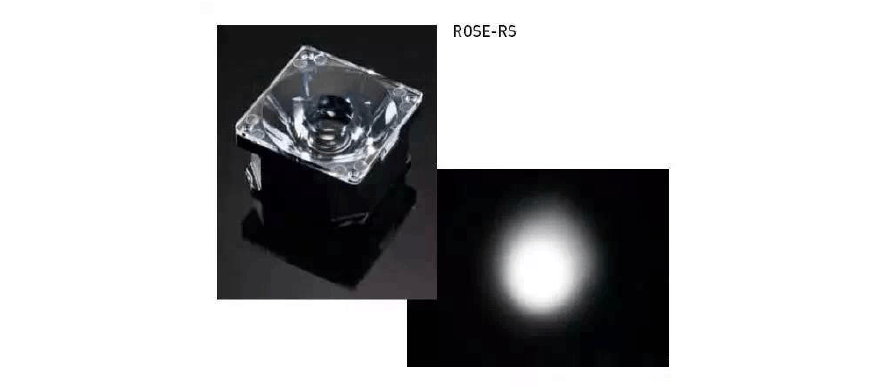
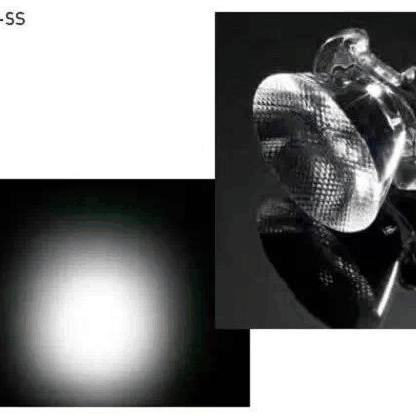
Soft Condenser Lens - SS
It can be seen from the comparison between the figure below and the previous one. The biggest difference between this type of lens and the condenser lens is that the surface is treated with soft light so that a better light quality distribution can be obtained. However, compared with the previous condenser lens, The cd/lm will be relatively lower, and the angle will be slightly wider. The application of optics here is mainly projection light, spotlight, and so on. Neither is good or bad, both are to meet the needs of different optical applications, fish and bear's paws are good things, but the application direction is different.
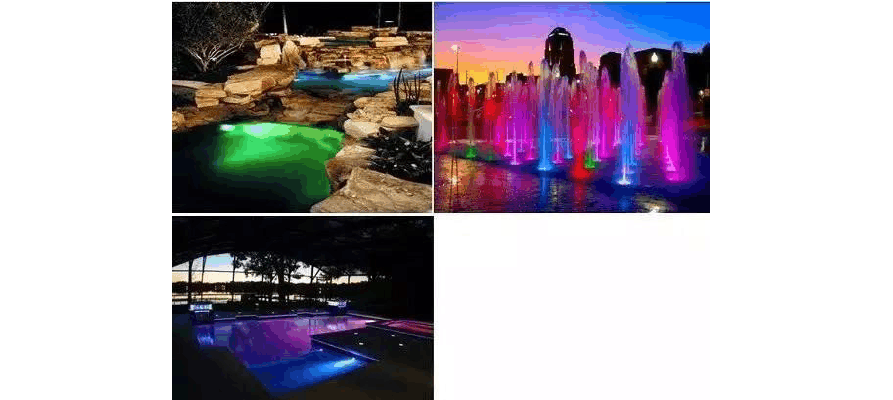
Diffusion Condenser Lens ( -D- )
Please look at the figure below. This type of lens with diffuse surface design has the smoothest light distribution among the three condenser lenses. In comparison, the peak light intensity obtained by cd/lm is slightly higher than that of the lens with diffuse surface design. A bit lower, but both are about the same angle. Because its surface is diffused surface treatment, the light mixing effect will be better, and the glare control effect will be better, so this application of wall washers and mid-range spotlights and spotlights are all leveraged.
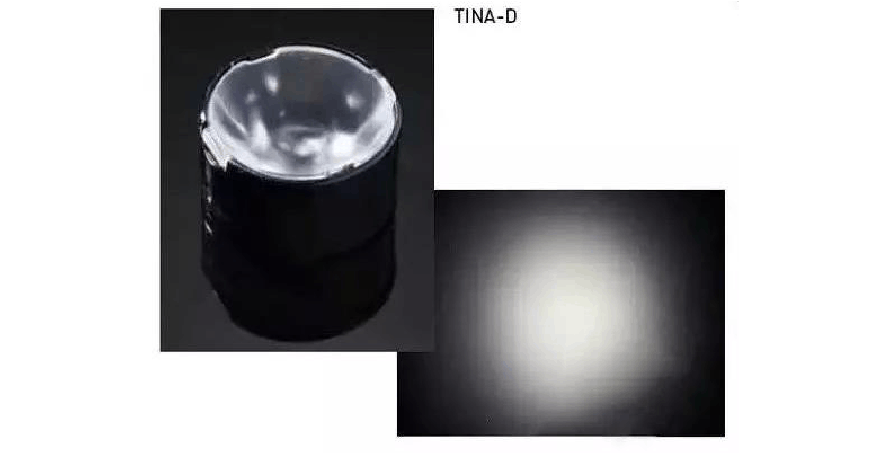
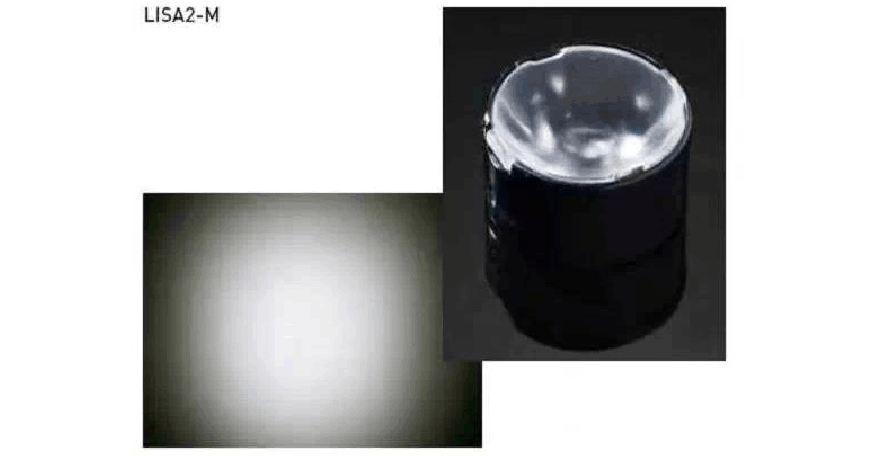
Medium Angle Lens (-M/M2)
The light distribution effect of this type of lens is between the condenser lens and the large-angle lens, and the surface has a small "pincushion" surface design. If you put an LED inside, it looks a bit like some kind of "flying insect's eye", in general, will not have a rough diffuse surface. The application is very wide, all kinds of lamps may be used, and the light distribution is uniform.
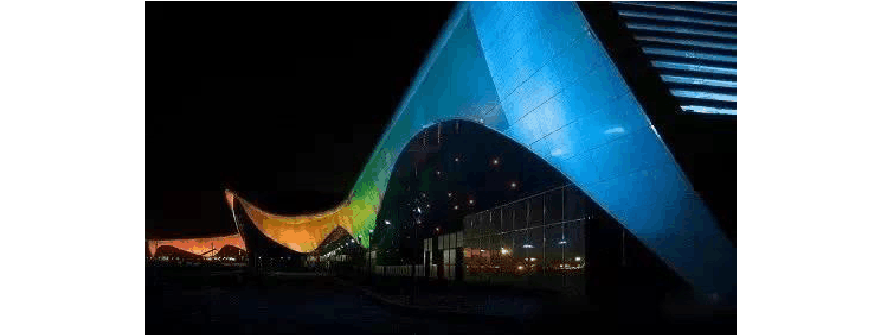
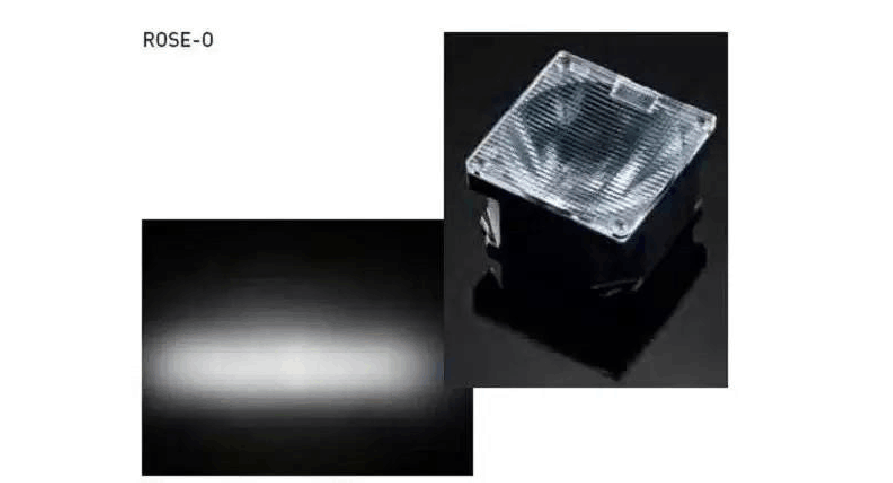
Elliptical Light Lens (-O/ -O-90)
This type of lens is most widely used in building wall washers, advertising lightbox lighting, etc. The light distribution of the ellipse is characterized by a very wide light distribution on one axis, and a small light angle on the other axis. The purpose is very simple, the light type represents everything, the wide one is for the wide and uniform coverage of the C0-C180° light distribution, and the narrow axial C90-C270° light distribution is to spread the light farther. This type of lens is also available with its own deflection angle, which is convenient for wall washer applications where the lamps cannot be adjusted.

1.png)
This category belongs to the large-angle category in the TIR family of lenses, which is subdivided into multiple angle grades from 40° to 80°. The larger the angle, the wider the light distribution. The standard for these types of lenses is generally a rougher diffuse surface, but some lenses will have a medium-sized "pincushion" surface or a curved surface, or both. The application of this type of lens is also very wide and so on.
Post time: Feb-24-2022




